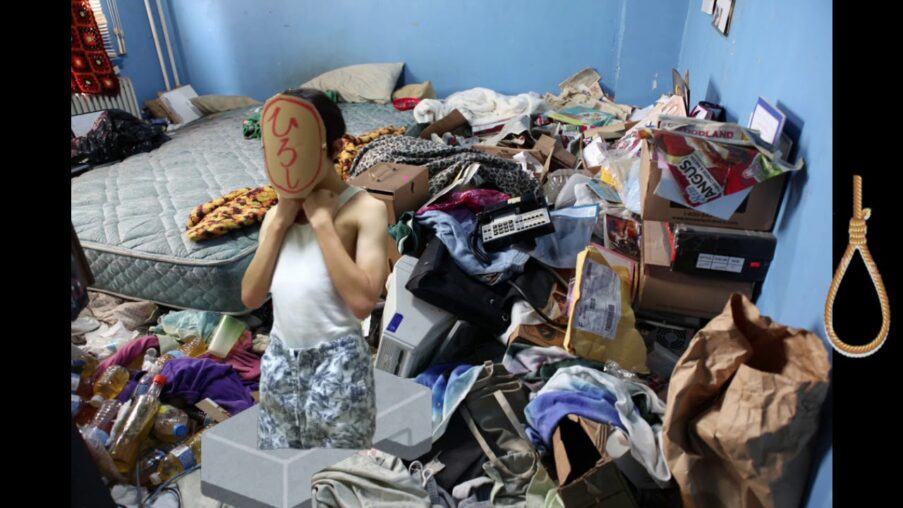Many people take for granted the ability to move freely through their homes, sleep in their beds, cook in their kitchens, and welcome visitors. However, for those dealing with hoarding disorder, these everyday activities often become challenging or impossible.
Hoarding disorder affects millions worldwide and goes far beyond having a cluttered desk or messy garage. The condition involves persistent difficulty parting with possessions, regardless of their actual value. Many people struggling with hoarding behaviours don’t recognise how serious their situation has become, or they feel too overwhelmed or embarrassed to ask for help.
Understanding when professional intervention is necessary becomes important both for individuals experiencing hoarding tendencies and concerned family members. Spotting these signs early can prevent a manageable situation from evolving into a full-blown crisis requiring emergency measures.
Physical Warning Signs in the Home Environment
-
When Basic Functions Become Impossible
The most obvious indicator that hoarding requires professional help occurs when normal household activities become difficult or impossible. This goes well beyond ordinary clutter.
Beds transform into storage areas rather than places for sleeping. Kitchen counters disappear under piles of items, making cooking nearly impossible. Bathrooms fill with possessions until maintaining personal hygiene becomes a daily struggle. People often create narrow pathways through their homes to navigate around towers of accumulated belongings.
Finding essential items becomes an overwhelming task. Despite knowing certain important things exist somewhere in the home, medications, financial documents, or cherished possessions, locating them becomes virtually impossible. This creates ongoing stress and leads to missed appointments, financial problems, or health risks when time-sensitive items remain buried in the clutter.
-
Inaccessible Areas and Safety Concerns
As hoarding worsens, entire sections of homes often become completely unusable. Spare rooms typically fill first, followed by less-used spaces like dining rooms or guest bathrooms. Eventually, primary living areas become unusable, forcing drastic lifestyle adaptations.
These inaccessible areas create serious safety hazards that typically require professional hoarding cleanup services:
- Blocked or narrowed exits make emergency evacuation difficult or impossible
- The weight of accumulated items can compromise the structural integrity of the home
- Risks of floor collapse or damage to supporting walls increase
- Fire hazards from items stacked near heating sources
- Blocked electrical panels prevent necessary maintenance
- Large volumes of flammable materials create dangerous conditions
If a fire starts in these conditions, both escape and firefighter access become severely limited.
-
Deteriorating Cleanliness and Health Impacts
Declining sanitary conditions strongly indicate that professional help is needed. As spaces crowd with possessions, normal cleaning becomes increasingly difficult. Dust accumulates, spills remain unaddressed, and regular maintenance becomes practically impossible.
More severe situations involve perishable items lost within the clutter, causing odours, mould growth, and pest infestations. These conditions create respiratory problems and worsen existing health conditions like asthma or allergies. Rodent or insect presence introduces additional health risks through contamination.
Behavioural and Emotional Red Flags
-
The Emotional Struggle with Discarding
People with hoarding disorder experience intense emotional distress when faced with discarding items. Unlike the mild attachment most people feel toward certain possessions, those needing hoarding help display significantly stronger reactions.
This distress manifests as anxiety, tears, anger, or panic attacks when attempting to dispose of seemingly unimportant items like old newspapers, empty containers, or broken appliances. The person develops elaborate reasons for keeping each item, often focused on potential future use, sentimental value, or feeling responsible toward the object.
Family members frequently report that cleanup attempts quickly become emotionally charged. A well-intentioned effort to clear a single surface or room triggers intense responses that halt progress.
-
The Cycle of Acquisition
Continuing to bring new items home despite existing excessive clutter signals a need for help. This compulsive acquisition takes many forms: shopping sprees, collecting free items, inability to resist sales, or retrieving discarded objects.
Acquisition often follows patterns reflecting specific concerns. Some people accumulate information sources like newspapers or magazines, fearing they’ll miss important information. Others collect specific categories like clothing, tools, or craft supplies for anticipated future needs.
This behaviour continues despite negative consequences. Even when money is tight, storage space is nonexistent, or relationships are damaged, the drive to acquire persists. This indicates a need for professional hoarding help addressing the underlying psychological mechanisms.
-
Withdrawing Themselves From Socialising And Isolating
Progressive withdrawal from social connections signals that hoarding significantly impacts quality of life. This isolation typically begins with reluctance to have visitors due to embarrassment about living conditions.
Over time, this avoidance expands to declining invitations, making excuses to prevent others from entering their space, or limiting social interactions to outside locations. Eventually, some individuals stop answering doors or phones altogether, fearing judgment or unwanted interventions regarding their living situation.
This isolation creates a troubling cycle. As social connections diminish, opportunities for perspective or gentle encouragement toward change disappear. The resulting loneliness often intensifies emotional attachment to possessions, which substitute for human relationships.
Impact on Functional Living
Daily Activities Are Compromised
When hoarding severely impacts the ability to perform normal daily activities, intervention becomes critical. Basic functions that become challenging include:
- Cooking nutritious meals when kitchen appliances hide under clutter
- Sleep quality suffers when beds are partially or completely filled with possessions
- Personal hygiene routines become irregular when bathroom access is limited
- Bill payment and financial management are turning chaotic
- Important documents disappearing into general clutter
- Missed payments, service disconnections, or financial penalties occurring regularly
These functional impairments represent significant quality-of-life decline and often motivate individuals or families to seek professional help. When basic self-care becomes compromised, the situation has progressed beyond self-help strategies.
Professional and Financial Consequences
Hoarding frequently affects work life and financial stability. Job performance declines due to stress, sleep deprivation, or the mental burden of handling a challenging home situation. Sometimes hoarding behaviors extend to workplaces, creating professional complications.
Financial strain accompanies severe hoarding through multiple channels. Continuous acquisition diverts money from essential needs. Property damage from moisture, weight, or pest infestations requires expensive repairs. Many people rent additional storage units for overflow, creating ongoing expenses that strain budgets.
Extreme cases lead to legal and financial crises, including eviction, property condemnation, or code enforcement involvement. These situations require immediate professional hoarding cleanup services alongside mental health support, addressing both physical conditions and underlying causes.
When Should We Look For The Right Support?
Effective treatment typically begins with appropriate mental health support. Cognitive-behavioral therapy designed specifically for hoarding shows promising results, helping individuals understand their attachment to possessions, improve decision-making, and gradually change behaviors.
Mental health professionals can provide:
- Specialised cognitive-behavioral therapy targeting hoarding behaviours
- Home visits allow therapists to work with clients in their actual environment
- Skills development for organising and categorising possessions
- Decision-making frameworks for keeping vs. discarding items
- Strategies for resisting the urge to acquire new things
Medication may play a supporting role, particularly when hoarding co-occurs with conditions like depression, anxiety, or attention deficit disorder. A comprehensive mental health evaluation can determine whether this approach might benefit the overall treatment plan.
Specialised Cleanup Support
Professional hoarding cleanup services provide expertise for addressing the physical aspects of severe hoarding. These services extend far beyond standard cleaning, they offer trained personnel who understand both practical challenges and emotional sensitivities involved.
These professionals develop structured plans for sorting possessions, removing hazardous materials, and restoring home functionality. They work at a pace respecting emotional needs while making meaningful progress toward creating safer environments.
Quality hoarding cleanup services focus on collaboration rather than control, involving the individual in decisions whenever possible and providing compassionate support throughout. This approach reduces distress and builds skills preventing future recurrence.
The Ending Note
Recognising signs that professional hoarding help is needed represents an important first step toward positive change. While hoarding disorder presents significant challenges, effective treatments and support services continue to improve, offering genuine hope for recovery.
Throughout this process, maintaining compassion proves essential, recognising that hoarding disorder is not a choice or character flaw, but a complex condition requiring understanding and appropriate support. With the right combination of professional help and personal commitment, people affected by hoarding can make meaningful progress toward safer, more comfortable, and more connected lives.
If you recognise these signs in yourself or someone you care about, reaching out for professional help represents a courageous step toward improved quality of life and a healthier relationship with possessions. For professional hoarding cleanup services personalised specifically according to your needs, visit LifeCycle Transitions today.





